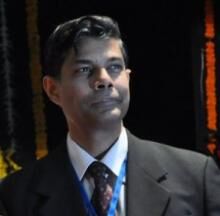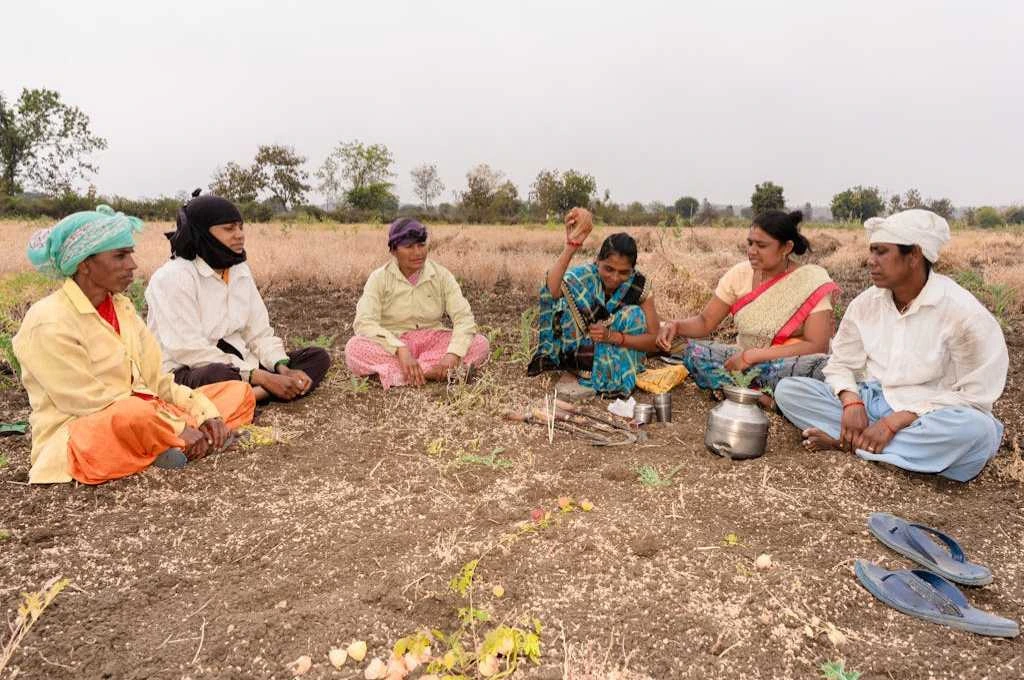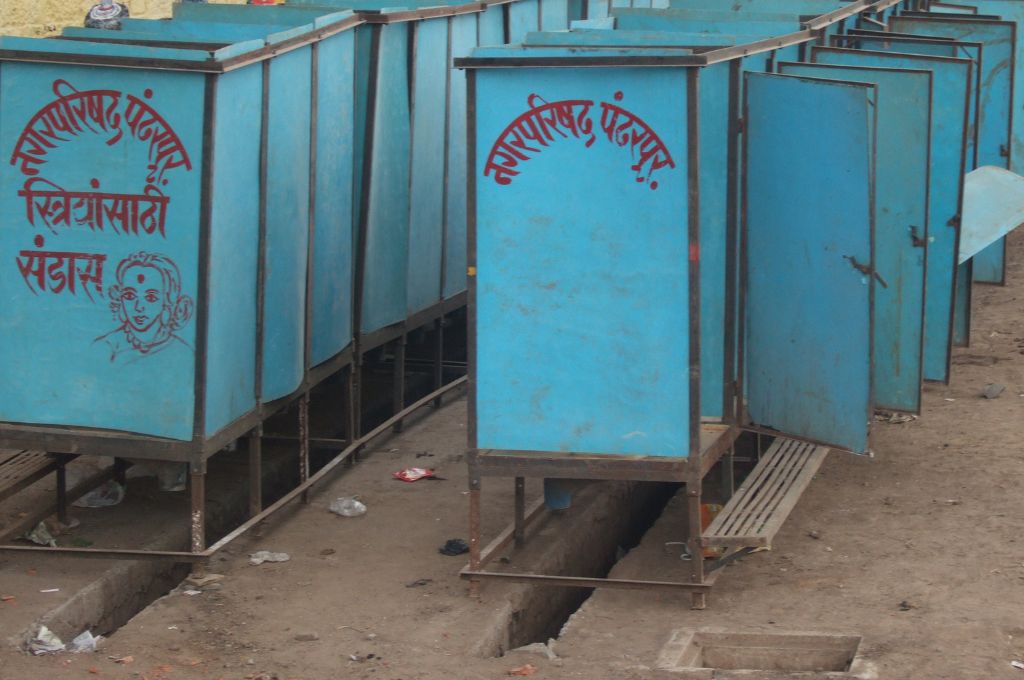In India, although we have approximately four months of monsoon (which is basically 45 days of effective rainfall), in drought prone areas, there are only 10-15 days of harvestable rain in the entire season. If you don’t get enough rain during those days, it’s a cause for worry.
Given that evaporation rates are high in the country–reaching up to 70-75% in summer, it would be foolhardy to keep this scarce resource on the surface; the focus should be on easing it underground. Not only does it replenish the soil, but more importantly, it recharges groundwater aquifers.
There is also a sociological reason for wanting to infiltrate water underground. When you harvest water over ground, it happens at a particular place and the people who benefit from it tend to be nearby, or in the adjacent areas. That water comes from other people’s territory–who in all likelihood may not benefit from it–and often leads to conflict. Groundwater–which is basically aquifers underground–on the other hand, doesn’t respect territorial boundaries and can be accessed by everyone.
So by forcing water underground, not only do you promote efficiency (by reducing evaporation) but also equity–everyone can access it. Moving water underground efficiently and at scale, however, can only happen if you take a watershed management approach.
What is watershed management?
Watershed management involves creating natural barriers to flowing water, to slow it down and hold it in-situ while channelising the surplus surface water into natural drainage systems where further barriers repeat the action. To do this, you dig continuous contour trenches, contour bunds, farm bunds; plant trees and grass; build gully plugs and check dams, and so on. But what you are essentially doing is altering the landscape and land use so that it becomes a gigantic water harvesting, conservation and holding catchment zone.
Stated simply, watershed management means you slow down running rain water, you make it walk, and then you make it stop. This stopped water is what you then push underground.
A key requirement for this is to undertake measures that are aligned with the ‘contour line’– points of equal elevation or height–which means that when water is poured along this line it will stay at the same level. Since water flows from higher to lower levels, conservation measures undertaken on contour lines cut across this gradient or the direction of the flow, thus reducing the velocity of water, preventing damage and arresting some of it within the catchment itself.
Watershed management can blur social boundaries
In India, most land, overall, is privately owned. For instance, in most villages Maharashtra, over 70% of the land is privately owned. Which means that if one follows the contour line approach–so as to optimise water harvesting—one is crossing over other people’s property and boundaries.
Water does not respect your or my territorial rights.
Water does not respect your or my territorial rights. So, following the water means crossing the physical boundaries that we have made. If I have to access this water I have to talk to my neighbours, regardless of what persuasion or caste they belong to. To undertake and reap the benefits of watershed management, we have to reach a consensus, we have to come to an agreement [1].
And by that act alone, for the first time, you are putting people in a context in which they have to deal with one another and negotiate an outcome. This has a hugely transformative effect on the way in which people view and relate to each other. It is not a given that they will choose to work together. But what is a given is that if they choose not to work, they will be standing on what is a quickly eroding slope. Hence the very dynamic of undertaking watershed development, pre-supposes and necessitates, cooperation.
But this is easier said than done. Our villages are divided and to earn the entire village’s trust we need to be clear about what the villagers will get, what they will have to put in, and also, when they will get it.
It can help move people out of poverty
Agriculture alone cannot provide for our teeming millions. What it can do is generate surpluses, which allow for capitalisation. For this to happen, you need a programme that allows for a breathing space of at least 15-20 years of sustained benefits, so that a generation can go to school, be healthy and get out of poverty. You need to offload people from land.
Watershed management, if done well, can do just that.
When we started out, girls in the villages were not sent to school because they had to go fetch water. Once villages started adopting watershed management, the people dug their own contour trenches, raised bunds and built water conservation and harvesting structures on their lands and streams in their villages. When the rains came, the results of the watershed were very visible as previously barren land turned green and agriculture yields improved.
For the first time, these villages had assured returns in terms of crop production, increased productivity, and water. They didn’t have to send their children to collect water or tend to cattle. And the first thing the parents did was send their children to school. Many of these children today have not only finished school, but they have done well and moved on in life.
It needs to be planned and implemented by the community itself
Watershed management can and should be undertaken by the villagers themselves. In 1995, we developed a tool to engage the community called Net Planning (originally called Participatory Net Planning); it has since been adopted by the Integrated Watershed Development Program (IWMP), a Government of India and state government-funded programme.
Here’s how it works: A farmer couple (wife and husband) are trained to map and measure their field, plan what can and should be done in terms of conservation measures, land use, how much it will cost, and what their contribution will be.
This approach ensures that everybody is aware of what’s going to be done on their field, how much it’s going to cost, when it’s going to be done, and what their role is. And this people-centric approach, supported by technologies like GIS and remote sensing, enables comprehensive location- and context-specific planning at scale.
In many districts in Maharashtra today, much of this watershed rehabilitation and construction works are being handed out by the government to contractors. There is no ownership among the community in these cases: “Since the government has built this, it is their job to look after it”. As a result our countryside is ridden with defunct watersheds.
When we pay villagers to do this work, they invest that money back into their community.
On the other hand, by involving the community in all aspects of the project, jobs are created within the village itself–people earn money and this kickstarts the local economy.
When we pay villagers to do this work, they invest that money back into their community–by paying off debt, buying things they need, and so on. But, when you give the money to a contractor, you are actually removing money from the village.
Moreover self-construction also leads to sustainability. When we go back to a village 10-15 years after a project closes, the assets that were created then still exist. We can see that the economic levels have gone up and the nature of the land itself has changed; you can tell that this is something that will stay.
The reason is simple: If your farm is productive now, you are going to do whatever it takes to ensure that it continues. If you see that the structures are leaking or breaking down, you will get them repaired. Once you have an understanding of what these structures are, what they do, the implications on your livelihood, and that you need to work with your neighbours to fix it, the battle is already won.
It requires patience
The main reason watershed management isn’t being done by more people is because the results, while sustainable, take a while to fructify. Today, people want a quick fix, and watershed management doesn’t give you that. But it’s worth considering the different standards we have for different aspects of our lives.
We don’t take children out from kindergarten and send them directly for their 10th standard board exams. We make them go through 10-12 years of schooling. Why? It’s because we have understood that the deeper and lasting processes in life take time. So why is it that when it comes to societal interventions, which are more complex and difficult, people insist that they get done in a couple of years?
If we want to see change in society, we cannot expect it to happen overnight. We need to be patient. And we need to follow the rules that societies respond to–equity, inclusiveness, fairness, transparency, and accountability.



